Egypt Travel Guide
Introduction
Egypt is one of the most mysterious destinations on the planet. Between the Nile, the Red Sea, Alexandria, Cairo, and pyramids that date back to 2500 BC, there’s so much history and culture to experience. Whether you’re concerned about the country’s safety or haven’t thought much about Egypt, this guide will put it on the map for you and show you just how mystical a trip to Egypt can be. Egypt is the oldest tourist destination on Earth. Ancient Greeks and Romans started the trend, coming to goggle at the cyclopean scale of the Pyramids and the Colossi of Thebes. During colonial times, Napoleon and the British looted Egypt’s treasures to fill their national museums, sparking off a trickle of Grand Tourists that eventually became a flood of travelers. Today, the most popular places to visit are not only the monuments of the Nile Valley and the souks, mosques, and madrassas of Islamic Cairo but also fantastic coral reefs and tropical fish, dunes, ancient fortresses, monasteries, and prehistoric rock art.
Best Time to Visit Egypt
Egypt’s traditional tourist season runs from late November to late February, which most see as the best time to visit. However, in recent years, Luxor and Aswan have only been busy with tourists during the peak months of December and January. The Nile Valley is balmy this winter, although Cairo can be overcast and chilly. Winter is also the busiest period for the Sinai resorts, while Hurghada is active year-round. Aside from the Easter vacation, when there is a spike in tourism with a pleasant climate, March or April are also good times to visit.
How to Get to Egypt?
Getting to Egypt by land is possible, but most visitors fly in. Cairo has direct scheduled flights from London and New York, with indirect routes from pretty much everywhere. There are also low-cost flights from Britain to Luxor and the beach resorts.
What to Buy from Egypt?
Visitors to Egypt are spoilt for choice regarding souvenirs: traditional crafts such as jewelry, textiles, glassware, leatherwork, brass, and copperware offer good value for money if you’re prepared to haggle and be choosy. One thing not to buy is any supposed antiquity. The export of antiquities is strictly prohibited, and you could end up in prison if caught trying to smuggle them. Another thing to avoid is ivory products: their sale is legal, but almost all Western countries prohibit their importation. Inlaid or carved bone makes an acceptable substitute.
Where to Go in Egypt?
The land is a freak of nature, its lifeblood the River Nile. From the Sudanese border to the shores of the Mediterranean, the Nile Valley and its Delta are flanked by arid wastes, the latter as empty as the former are teeming with people. This stark duality between fertility and desolation is fundamental to Egypt’s character and has shaped its development since prehistoric times, imparting continuity to diverse cultures and peoples over seven millennia. It is a sense of permanence and timelessness buttressed by religion, which permeates every aspect of life. Although the pagan cults of ancient Egypt are as moribund as its legacy of mummies and temples, their ancient fertility rites and processions of boats still hold their place in the celebrations of Islam and Christianity.
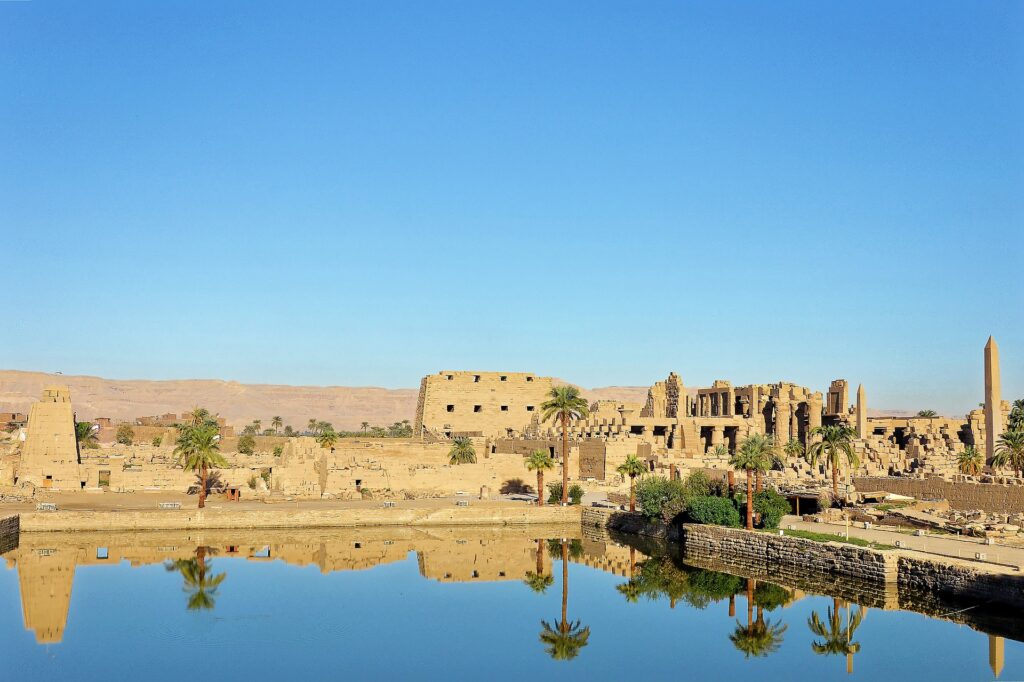
The result is a multi-layered culture, which seems to accord equal respect to ancient and modern. The peasants of the Nile and the Bedouin tribes of the desert live much as their ancestors did a thousand years ago. Other communities include the Nubians of the far south and the Coptic Christians, who trace their ancestry back to pharaonic times. Their love of their homeland, extended family ties, dignity, warmth, and hospitality towards strangers unites them. Though most visitors are drawn to Egypt by its monuments, the enduring memory is likely to be of its people and their way of life.
Cairo
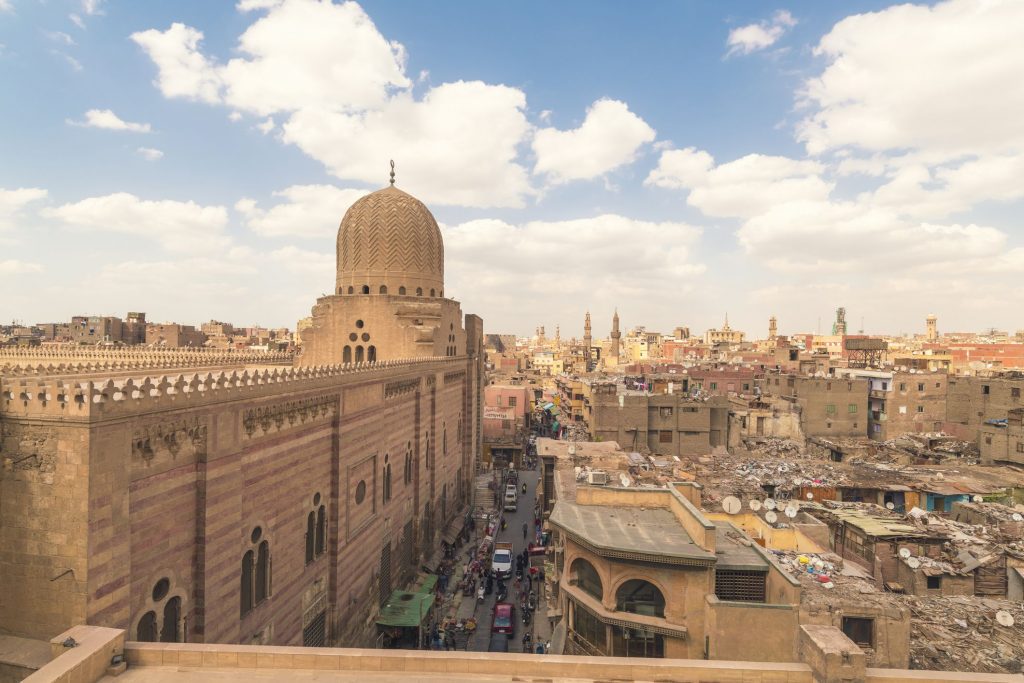
Egypt’s capital, Cairo, is a seething megalopolis whose chief sightseeing appeal lies in its bazaars and medieval mosques. However, there is scarcely less fascination in its juxtapositions of medieval and modern life, the city’s fortified gates, villas, and skyscrapers interwoven by flyovers whose traffic may be halted by donkey carts. The immensity and diversity of this “Mother of Cities” is as staggering as anything you’ll encounter in Egypt. Just outside Cairo are the first of the pyramids that range across the desert to the edge of the Fayoum, among them the unsurpassable trio at Giza, the vast necropolis of Saqqara, and the pyramids at Dahshur. Besides all this, superb museums are devoted to Ancient, Coptic, and Islamic Egypt, and enough entertainment to occupy weeks of your time.
Nile Valley
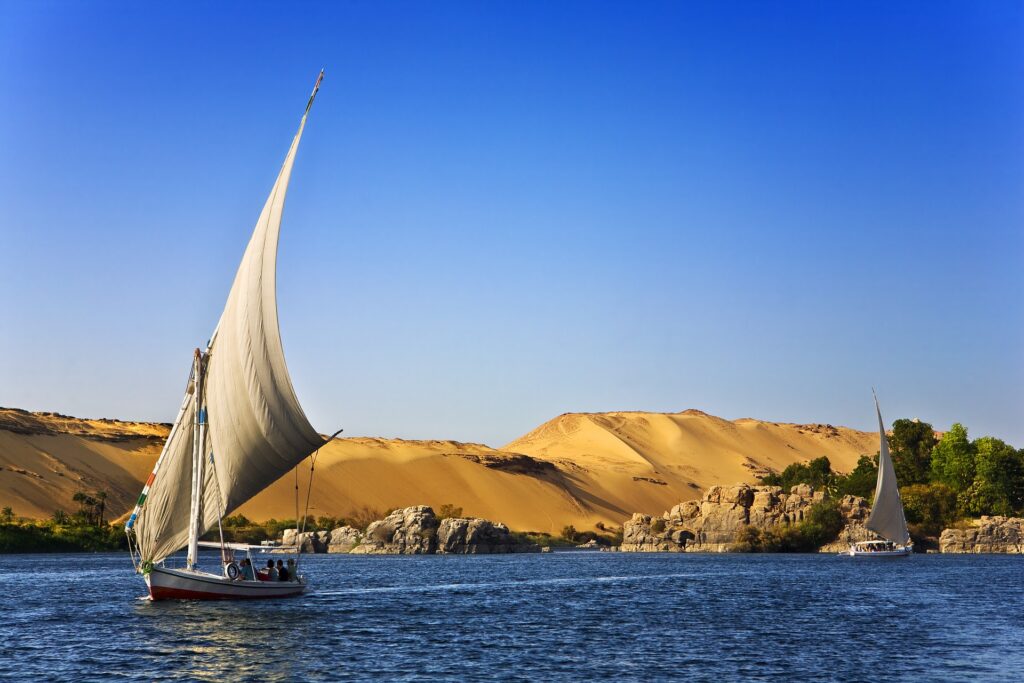
However, the principal tourist lure remains, as ever, the Nile Valley, with its ancient monuments and timeless river vistas – the Nile cruises on a luxury vessel or a felucca sailboat are a great way to combine the two. The town of Luxor is synonymous with the magnificent temples of Karnak and the Theban Necropolis, which includes the Valley of the Kings, where Tutankhamun and other pharaohs were buried. Aswan, Egypt’s southernmost city, has the loveliest setting on the Nile and a languorous ambiance. You can visit the island Philae temple of Isis and the rock-hewn colossi at Abu Simbel or cruise to other temples around Lake Nasser. Other sites not to be missed are Edfu and Kom Ombo, between Luxor and Aswan, and Abydos and Dendara, north of Luxor.
Besides monuments, Egypt abounds in natural wonders. Edged by coral reefs teeming with tropical fish, the Sinai Peninsula offers superb diving, snorkeling, and palm-fringed beaches where women can swim unmolested. Resorts along the Gulf of Aqaba are varied enough to suit everyone, whether you’re into the upmarket hotels of Sharm el-Sheikh, nearby Na’ama Bay or Taba further north, or cheap, simple living at Dahab and Nuweiba. From there, visiting St Catherine’s Monastery and Mount Sinai (where Moses received the Ten Commandments), mountainous interiors is easy. With more time, cash, and stamina, you can also embark on jeep safaris or camel treks to remote oases and spectacular wadis.
Red Sea
Egypt’s Red Sea Coast has more reefs further offshore, with snorkeling and diving traditionally centered around Hurghada, while barely touched island reefs from Port Safaga down to Marsa Alam beckon serious diving enthusiasts. Inland, the mountainous Eastern Desert harbors the Coptic monasteries of St. Paul and St. Anthony, Roman quarries, and a host of pharaonic and prehistoric rock art seen by few apart from the nomadic Bedouin. While the Eastern Desert is still barely touched by tourism, the Western Desert Oases have been on the tourist trail for forty years and host safaris in the wilderness. Siwa, out towards the Libyan border, has a unique culture and history, limpid pools, and bags of charm. Travelers can also follow the “Great Desert Circuit” (starting from Cairo, Luxor, or Assyut) through the four “inner” oases – through Bahariya and Farafra hold the most appeal, with the lovely White Desert between them, the larger oases of Dakhla and Kharga also have their rewards once you escape their modernized “capitals.” And for those into serious desert expeditions, there’s the challenge of exploring the Great Sand Sea or the remote wadis of the Gilf Kebir, whose prehistoric rock art is featured in the film The English Patient. In contrast to these deep-desert locations are the Fayoum and Wadi Natrun quasi-oases, featuring the fossil-strewn Valley of the Whales, diverse ancient ruins, and Coptic monasteries.
Diving
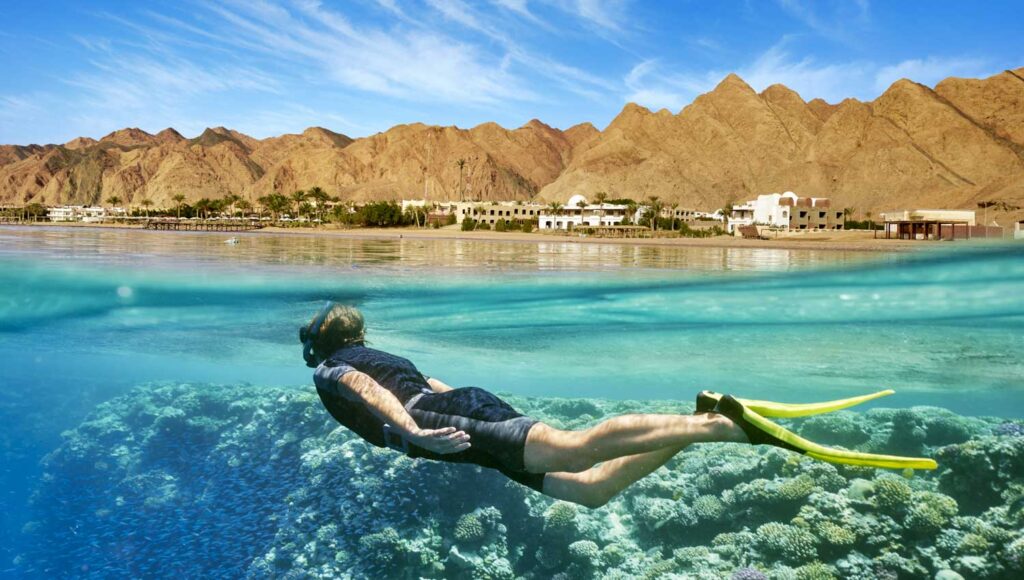
Egypt is one of the best diving destinations in the world. The Red Sea and the Gulf of Aqaba are rich in sea life and home to a beautiful array of dive sites, with plenty of options for both novices and experts alike: remarkably preserved World War II wrecks, coral reefs filled with dolphins, rainbow-colored anemone gardens, and shallow bays visited by turtles are just a few of the sites you can explore. The Sinai and Red Sea Coast chapters have detailed information on dive sites, recommended dive companies, and tips on safety and environmental issues.
Reefs
The Red Sea’s stable climate, shallow tides, and exceptionally high salinity provide perfect conditions for unusually brilliant corals and sponges – a revelation if you have previously dived in places like Hawaii or the Caribbean, whose reefs will forever seem dull by comparison. Created by generations of minuscule polyps depositing their limestone exoskeletons on the remains of their ancestors, coral reefs can grow by 4–5cm a year. Besides hard corals such as brain and fire coral, which have a rigid outer skeleton, the Red Sea hosts an abundance of soft corals, including whip coral and sea fans. Because most types of coral need a moderate amount of warm sunlight to flourish, the most spectacular formations are found within 30m of the surface.

Most Red Sea reefs are of the fringing type, with a shallow lagoon just offshore, whose warm water and rubble-strewn bottom attract starfish and sea slugs. Clams and sea urchins hide in crevices, and schools of damselfish and butterflyfish flit about. Its seaward boundary is the reef flat, whose crest is usually a barren, rough-surfaced shelf, while deeper areas are rich in flora and fauna. Beyond is a coral-encrusted slope, leading to a drop-off like the edge of a cliff. Flatter areas may be dotted with coral pillars or knolls. Lower down, the coral is sparser, and you may find sandy terraces overgrown with seagrass, sustaining sea horses and pipefish. Beyond the drop-off lies open water.
Alexandria
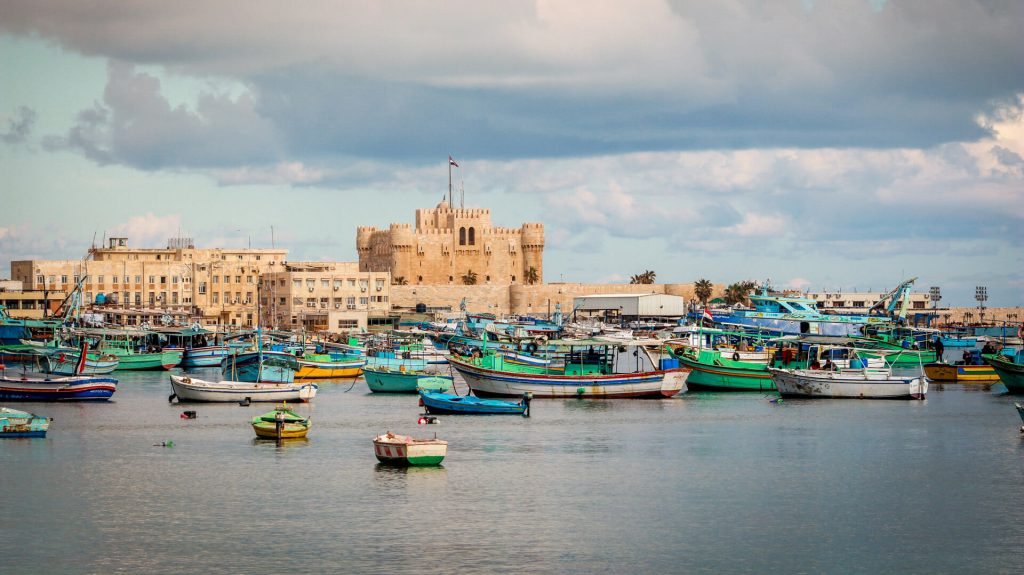
On the Mediterranean, Egypt’s second city, Alexandria, boasts many beaches to which Cairenes flock in summer and excellent seafood restaurants. Despite being founded by Alexander the Great and lost to the Romans by Cleopatra, the city today betrays little of its ancient glory; however, its magnificent new library, featuring statues raised from the sunken remains of Cleopatra’s Palace, and the Lighthouse of Pharos (which divers can explore) are restoring an air of majesty. Famous, too, for its decadence during colonial times, Alexandria still allows romantics to indulge in a nostalgic exploration of the city immortalized in Durrell’s Alexandria Quartet, while further along the Mediterranean coast is the World War II battlefield of El-Alamein. For divers, the waters off Alexandria offer an array of sunken cities and wartime wrecks to explore.

The Nile Delta, east of Alexandria, musters few archeological monuments given its prominent role in ancient Egyptian history and is largely overlooked by tourists. However, the Delta hosts colorful religious festivals at Tanta, Zagazin, and other towns for those interested in Egyptian culture. Further east lies the Canal Zone, dominated by the Suez Canal and its three cities: Suez is grim but a vital transport nexus between Cairo, Sinai, and the Red Sea Coast; Port Said and Ismailiyah are pleasant, albeit sleepy places, where you can get a feel of “real Egypt” without tripping over other tourists.
Best Tourist Attractions in Egypt
Pyramids of Giza
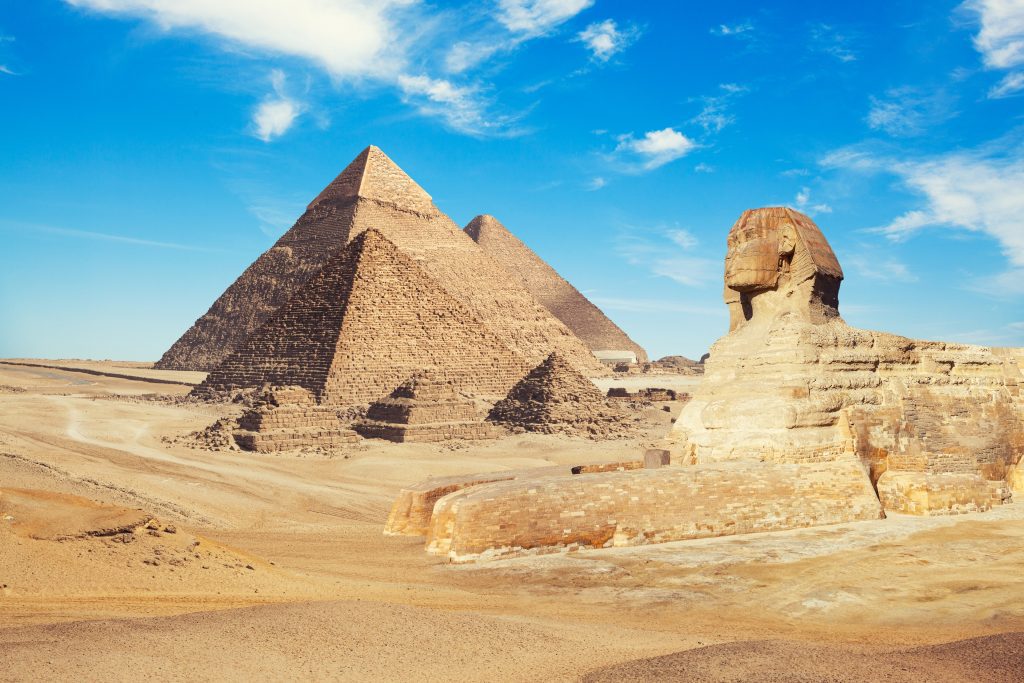
The last surviving of the Seven Wonders of the Ancient World, the Pyramids of Giza, are one of the world’s most recognizable landmarks. Built as tombs for the mighty Pharaohs and guarded by the enigmatic Sphinx, Giza’s pyramid complex has awed travelers down through the ages and had archaeologists (and a fair few conspiracy theorists) scratching their heads over how they were built for centuries. Today, these megalithic memorials to dead kings are still as wondrous a sight as ever. Giza’s pyramids should not be missed as an undeniable highlight of any Egypt trip.
Luxor’s Karnak Temple and the Valley of the Kings
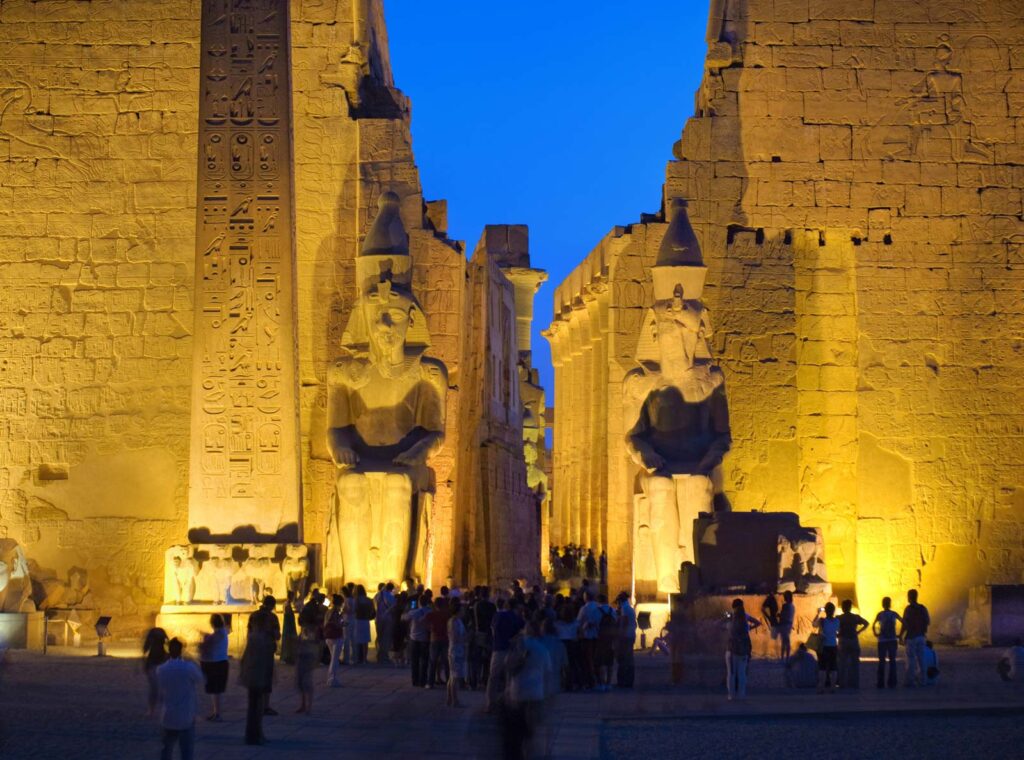
Famed for the Valley of the Kings, Karnak Temple, and the Memorial Temple of Hatshepsut, the Nile-side town of Luxor in Upper Egypt has a glut of tourist attractions. This is ancient Thebes, the power base of the New Kingdom pharaohs, and home to more sights than most can see on one visit. While the East Bank brims with vibrant souk action, the quieter West Bank is home to a bundle of tombs and temples called the world’s biggest open-air museum. Spend a few days here exploring the colorful wall art of the tombs and gazing in awe at the colossal columns in the temples. You’ll see why Luxor continues to fascinate historians and archaeologists.
Islamic Cairo

The atmospheric, narrow lanes of the capital’s Islamic Cairo district are full of mosques, madrassas (Islamic schools of learning), and monuments dating from the Fatimid to the Mameluke eras. This is where you’ll find the labyrinth shopping souk of Khan el-Khalili, where coppersmiths and artisans still have their tiny workshops, and stalls are laden with ceramics, textiles, spice, and perfume. Surrounding the market is a muddle of roads, home to some of the most beautiful preserved architecture of the old Islamic empires. There is a wealth of history here to explore. Visit Al-Azhar Mosque and the dazzling Sultan Hassan Mosque, and make sure you climb to the roof of the ancient medieval gate of Bab Zuweila for the best minaret-speckled panoramas across the district.
Aswan
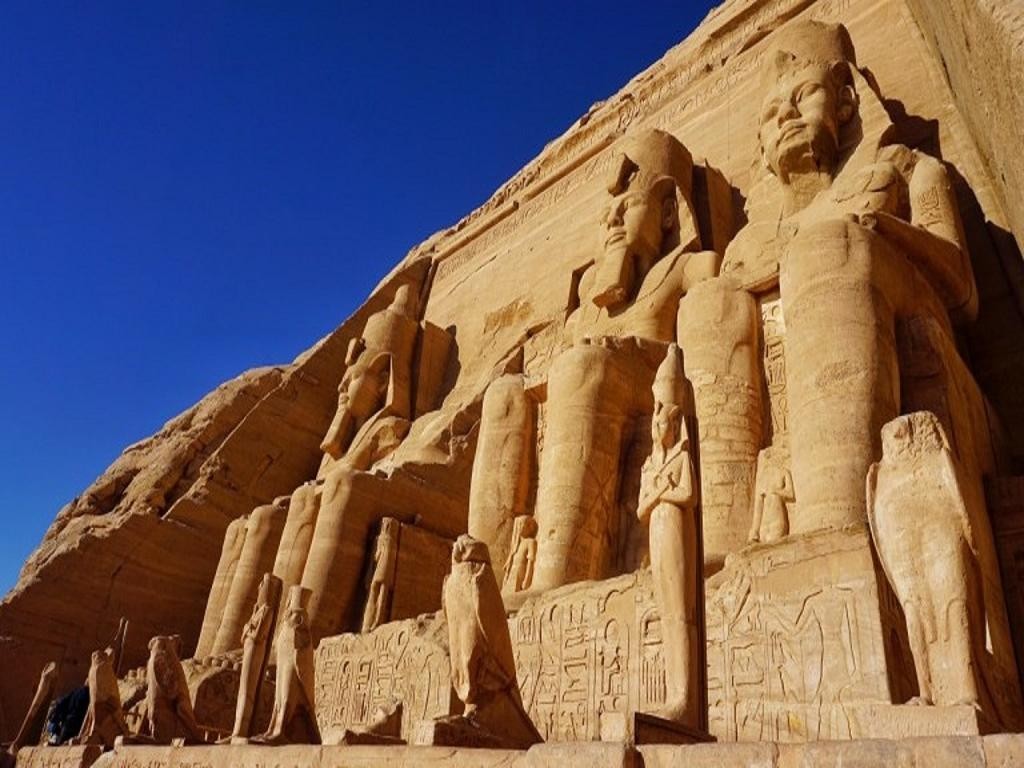
Egypt’s most tranquil town is Aswan, set upon the winding curves of the Nile. Backed by orange-hued dunes, this is the perfect place to stop and unwind for a few days and soak up the chilled-out atmosphere. Take the river ferry across to Elephantine Island and stroll the colorful streets of the Nubian villages. Ride a camel to the desert monastery of St. Simeon on the East Bank. Or drink endless cups of tea at one of the riverboat restaurants while watching the lateen-sailed feluccas drift past. There are many historic sites here, and numerous temples nearby, but one of Aswan’s most popular things is simply kicking back and watching the river life go by.
Abu Simbel
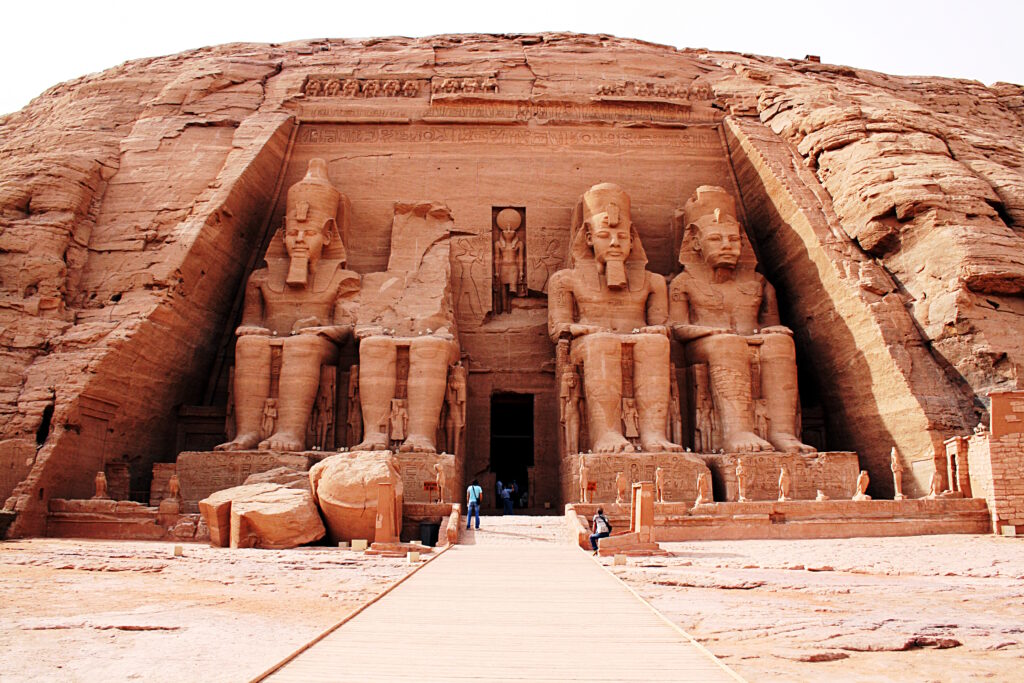
Even in a country adorned with temples, Abu Simbel is something special. This is Ramses II’s great temple, adorned with colossal statuary standing guard outside and an interior sumptuously decorated with wall paintings. Justly famous for its megalithic proportions, Abu Simbel is also known for the incredible feat of moving the entire temple from its original setting—set to disappear under the water because of the Aswan dam—during the 1960s in a massive UNESCO operation that took four years.
Egyptian Museum

A treasure trove of the Pharaonic world, Cairo’s Egyptian Museum is one of the world’s significant museum collections. The faded pink mansion is home to a dazzling amount of exhibits. It’s a higgledy-piggledy place with little labeling on offer and not much chronological order, but that’s half of its old-school charm. Upstairs is the golden glory of King Tutankhamun and the fascinating royal mummies exhibits, but every corner you turn here is home to some beautiful piece of ancient art or sculpture that would form a highlight of any other museum.
White Desert

Egypt’s kookiest natural wonder is the White Desert, where surreally shaped chalk mountains have created what looks like a snowy wonderland in the middle of the arid sand. The landscapes here resemble something from a science fiction movie, with blindingly white boulders and iceberg-like pinnacles. For desert fans and adventurers, this is the ultimate weird playground, while anyone filled with temples and tombs will enjoy this spectacular natural scenery.
Siwa Oasis
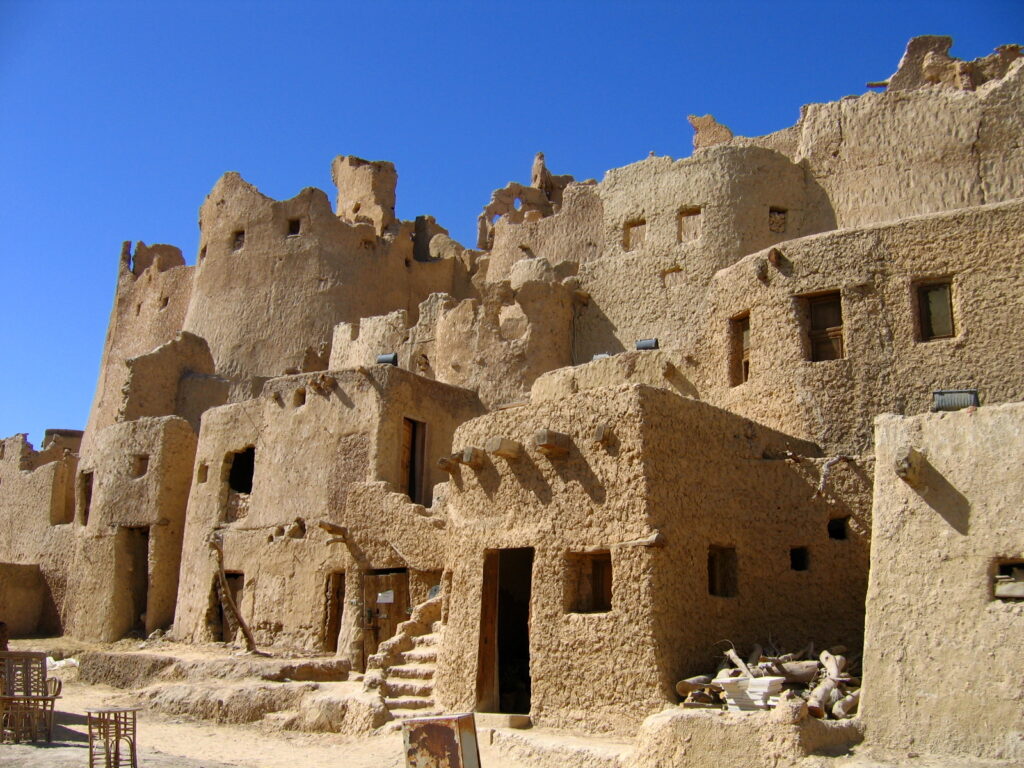
Way out west, Siwa is the tranquil tonic to the hustle of cities. His gorgeous little oasis, surrounded by date palm plantations and numerous freshwater springs, is one of the Western Desert’s most picturesque spots. The town is centered around the ruins of a vast mud-brick citadel that dominates the view. It is a top spot to wind down and go slow for a few days and an excellent base from which to plan adventures into the surrounding desert.
Abydos Temple
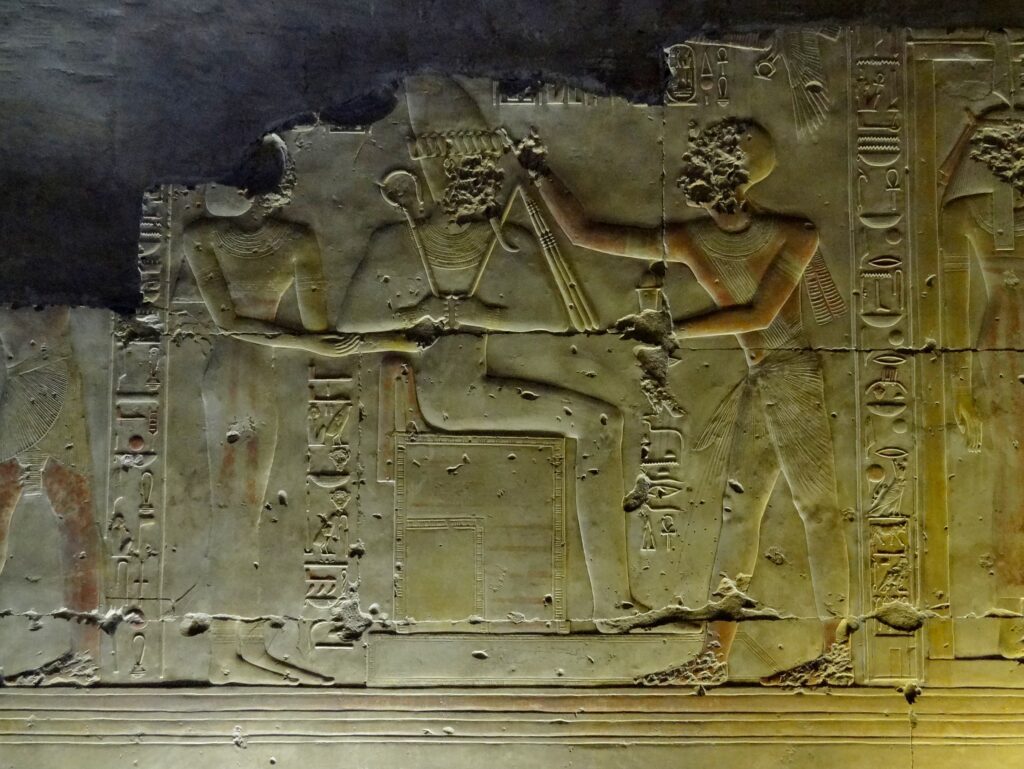
Dusty Abydos town wouldn’t make much attention to the tourism radar if it weren’t for the wantable temple on its doorstep. Abydos’ Temple Abydos’is is one of ancient Egypt’s most famous artistic treasures. Its chunky columns and walls, covered in beautiful hieroglyphics and intricate paintings, are spellbinding sights. Even better, you can admire them without the crowds, as despite their dazzling beauty, they receive few visitors compared to the temples in nearby Luxor.
Saqqara
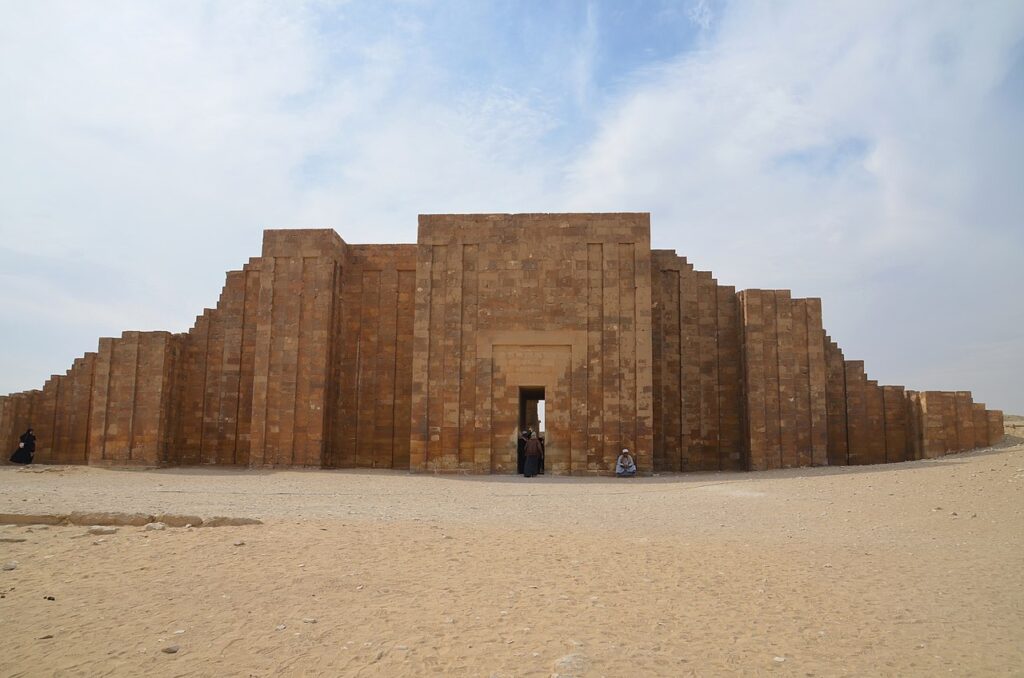
Everyone’s heard oEveryone’syramids, bGiza’sy’re not Egypt’they’repyramids. Day-tripping from Cairo, Saqqara is the vast necropolis of the Old Kingdom’s pharaohs. It showcases how the Ancient Egyptians advanced their architectural knowledge to finally create a true pyramid, with the Step Pyramid, Bent Pyramid, and Red Pyramid among the highlights. The various tombs of court administrators, with interior walls covered with friezes describing daily scenes scattered throughout the archaeological site, are just as much a reason to visit as the pyramids themselves.
St. Catherine’s Monastery
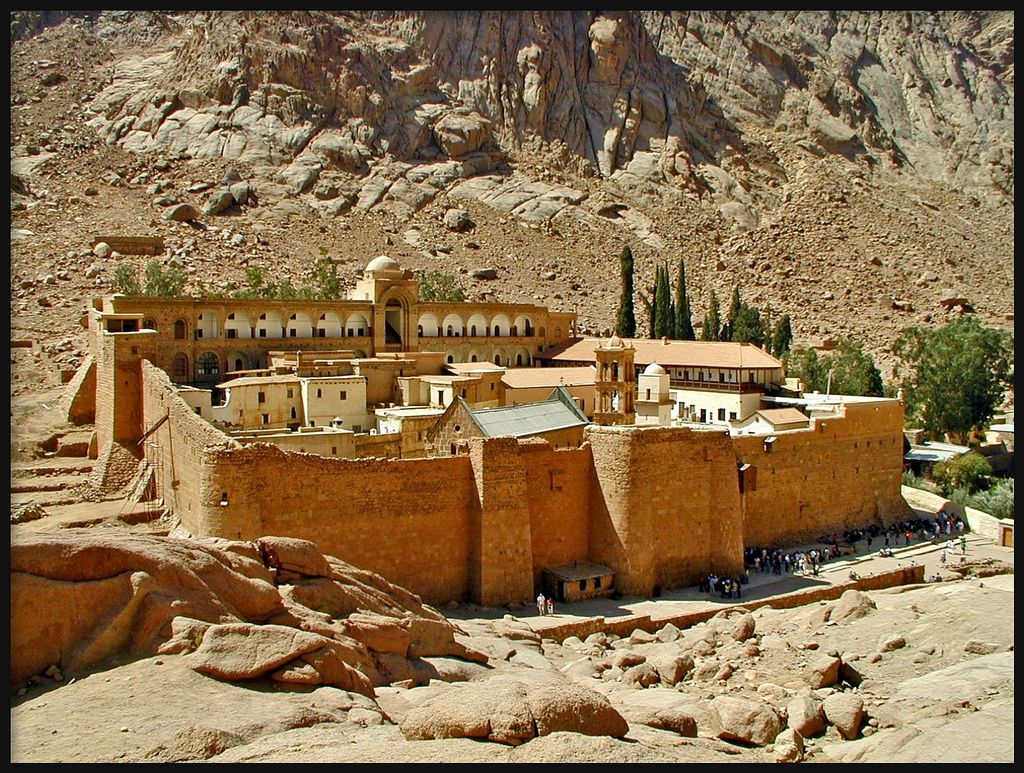
One of Catherine’s monasteries in the world, St. Catherine’s, stands at the foot of MoCatherine, where Moses is said to have received the Ten Commandments. This desert monastery is home to an incredible collection of religious iconography, art, and manuscripts (some of which can be seen in the on-site museum) and the burning bush. For most visitors here, a trip to St. Cathe also involves a hike up Mount SiCatherine’s sunrise or sunset. Take the camel path for the easy route, or limb the famous Steps of Repentance for better views.










